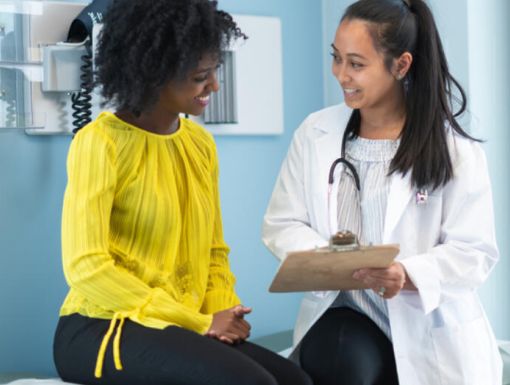
6 Most Common Gynecological Cysts Found in Women and Why We Get Them
What are cysts and why do we get them?
A cyst is a sac, or growth, that’s filled with fluid and can either be benign (non-cancerous) or malignant (cancerous.) Cysts can grow on your organs, under your skin or in or on your genitals, like your vagina.
Ovarian cysts are the most common types of cysts in women or people who menstruate. Ovarian cysts form on the ovary during your menstrual cycle and typically go away on their own. Ovarian cysts are broken down into two categories: functional cysts and non-functional cysts. A “functional cyst” means they’re a normal part of your monthly cycle. A non-functional cyst is not.
Two types of functional ovarian cysts include:
- Follicle cyst
- Corpus luteum cyst
A follicle cyst forms when an egg grows inside of a tiny sac called a follicle. When the egg is ready to be released, the follicle opens. If the sac does not open, it can cause a follicle cyst, which will often go away in 1 to 3 months and do not require follow up. These may also be called physiologic cysts.
A corpus luteum cyst forms when an egg is released and the empty follicle shrinks, closes back up and collects fluid. It may go away within a couple of weeks, but it could bleed or cause pain as it grows larger. If pregnancy occurs, these cysts stick around and provide hormones that support the pregnancy. These are often seen on pregnancy dating ultrasounds.
Non-functional ovarian cysts include:
- Multiple smaller cysts on the ovaries, also known as polycystic ovary syndrome (PCOS)
- Cancerous cysts
- Other cysts as mentioned below
While cysts commonly form on the ovaries of women or people who menstruate during their fertile years, which are mostly non-cancerous, cysts found on the ovaries of older women, especially women who have gone through menopause, are more likely to be cancerous.
What are some other types of non-functional cysts?
Endometriomas are cysts that form in the ovaries due to endometriosis, which is a disease when tissue similar to the lining of the uterus grows in other places in the body. Endometriosis (or “endo”) often causes very painful menstrual cycles and can result in infertility. An endometrioma is filled with a dark brown fluid and are sometimes referred to as “chocolate cysts.” When endometriomas are found, it typically indicates a severe case of endometriosis. Endometriomas can be common in people with endo and most cases are non-cancerous.
Dermoid cysts, or teratomas, are cysts that are formed by reproductive cells that make the eggs within the ovaries. Dermoid cysts often contain multiple types of tissue, such as hair or teeth, and are rarely cancerous. They can grow to be large and are sometimes surgically removed.
Cystadenomas can form on ovaries, as well, and are usually filled with a mucous-like substance. Cystadenomas may grow to be very large and can be surgically removed.
Nabothian cysts are non-cancerous cysts that form on the cervix, not on the ovary like the other cysts mentioned. Nabothian cysts form when cells on our cervix whose job it is to secrete mucus become clogged. Over time, as more and more mucus does not become excreted, a smooth, rounded elevation on the cervix forms, thus creating a Nabothian cyst. These types of cysts are completely normal and are not often cause for concern. As a matter of fact, a lot of people have them and don’t even realize it.
What are the symptoms of ovarian cysts?
- Bloating
- Pelvic pain, which can be sharp or dull.
- A feeling of fullness, heaviness or pressure in your belly
What are the severe symptoms of an ovarian cyst we should look out for?
- Sudden, severe abdominal or pelvic pain
- Pain, fever or vomiting
- Signs of shock (cold, clammy skin, lightheadedness, rapid breathing)
If you experience any of these symptoms, it’s important to see your gynecologist or visit the emergency room.
Most ovarian cysts are nothing to be concerned about. Each year during your wellness exam, your doctor examines your vagina, ovaries, and cervix to look for any signs of cysts, polyps and other abnormalities. If you have symptoms of a cyst, talk with your doctor. If you experience other symptoms associated with having a cyst, like unwanted hair growth or excess weight gain like in patients with PCOS, talk with your doctor. If you experience severe abdominal pain, vomiting and fever or signs of shock, visit the nearest emergency room.
Are you looking for a gynecologist? Make an appointment with an OB/GYN at Ochsner Health today.


